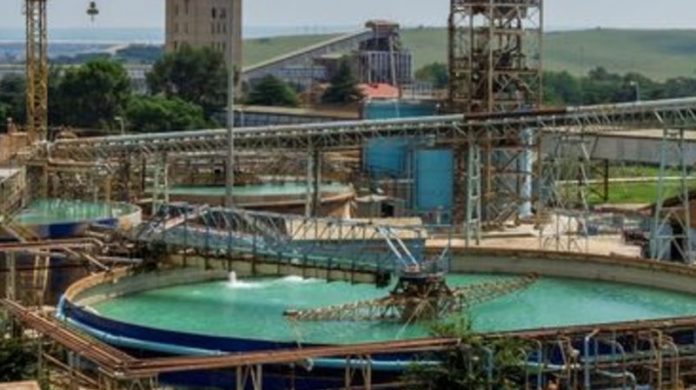
SHARES in DRDGold nipped up 6% in early Johannesburg trade after the company published March quarter production numbers which demonstrated the first benefits of its Far West Gold Recoveries (FWGR).
Gold production was 41,120 ounces for the quarter – the penultimate of the firm’s 2019 financial year – compared to 35,732 oz in the second quarter, an increase of 15%. Roughly 4,800 oz (most of the increase) was from FWGR.
Assisted by a higher rand gold price, all-in sustaining costs (AISC) for the quarter were 2% lower at R547,274 per kilogram. AISC were flat in dollar per ounce terms.
DRDGold said at its interim results presentation in February that FWGR was off to “a flying start”. Construction began in August 2018 and early-stage commissioning in early December 2018. “FWGR is off to a flying start and we look forward to the benefit of its contribution in the second half of the 2019 financial year,” it added.
The increase in gold price resulted in an increase in adjusted earnings before interest, tax, depreciation and amortisation (EBITDA) of some 100% to R58.3m ($4.1m) although DRDGold added that this number did not reflect the revenues or production costs of FWGR which are capitalised until commissioning, at which point they will be expensed.
Nonetheless, the potential benefits of FWGR are there to see. DRDGold’s overall yield was 4% higher as a result of the higher grade material that is being processed at the project. There was also an improvement in yield from Ergo, DRDGold’s existing operating property.
Cash on hand and cash equivalents fell to R169m as of March 31 from R209.4m whilst external borrowings fell to R17m from R173.3m. In the first phase of development, for which DRDGold raised R300m in loans despite a static gold price, it is targeting a processing rate of 500,000 tonnes/month.
In phase two, scheduled to come on stream 24 months after Phase 1, a central high-volume processing facility and new deposition site will be developed to handle about 1.2 million tonnes of material a month from different sources.
In order to buy FWGR – a transaction that lifted DRDGold’s reserves and resources by more than 80% – it brought in Sibanye-Stillwater as a 38% shareholder. Sibanye-Stillwater also has the option of increasing its shares in DRDGold to just over 50% – a deal that has seen Niel Pretorius, DRDGold CEO, cop some criticism for selling control cheaply.
In a separate announcement, DRDGold said on May 6 it had appointed Prudence Lebina as an independent non-executive director of the company with effect from May 3. Lebina, a chartered accountant, is CEO of GAIA Infrastructure Capital – an investment fund. She was previously head of corporate development and investor relations at Atlatsa Resources and head of investor relations at Exxaro Resources.











